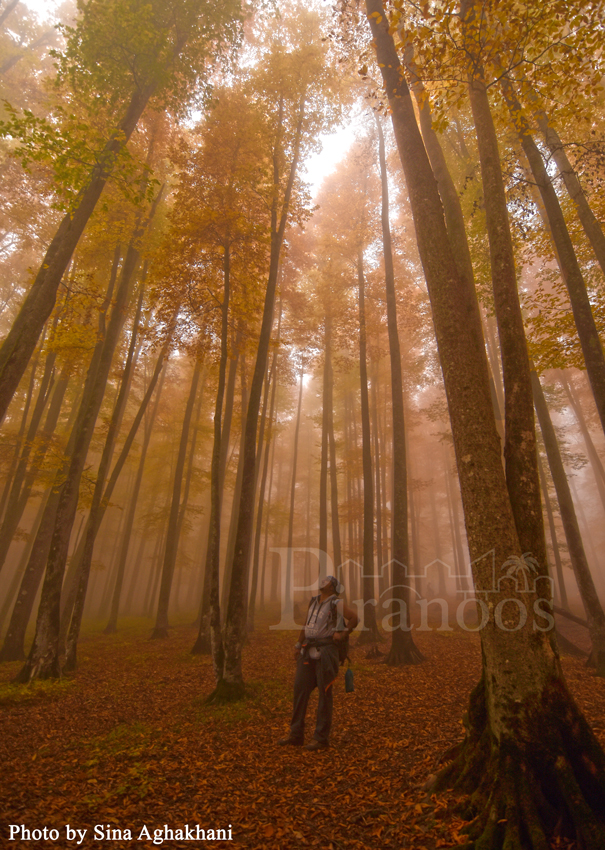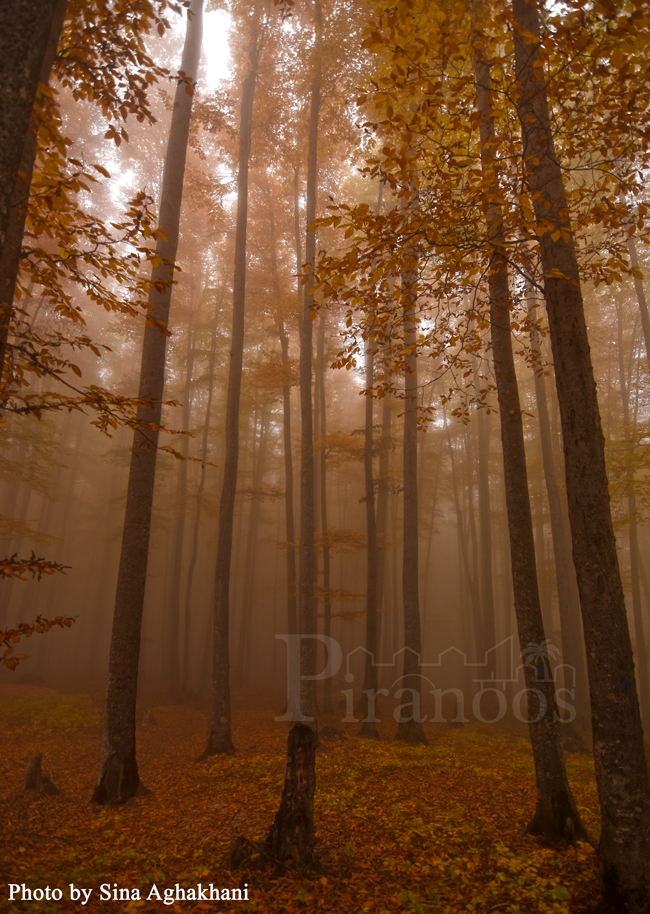In the south of the Caspian Sea, from Mazandaran to Gilan, Gorgan and Arasbaran, there are Hyrcanian forests, ancient and spectacular forests that are of a great value. Aside from their impact on the weather, these forests are home to many living organisms. Currently, the Hyrcanian forests are the habitat of 296 bird species and 98 mammal species. Some of the most famous carnivorous species found in the region of the Hyrcanian forests of Iran are the Mazandaran tiger, (which, unfortunately, has been extinct for 20 years), the brown bear, jackal, jungle cat, otter, red deer, hedgehog, Caspian horse, caracal and the Persian Leopard. Hyrcanian forests are also listed as an important International Bird Area (IBA). There are also150 type trees and shrubs such as Beech, Oak, black Alder, Caucasian Alder, Elm, Ash, Caspian Poplar and Oriental Hornbeam…
Beech forests cover a huge part of the Hyrcanian forests. Beech forest is the widest and most famous tree species in the northern mountain forests of Iran. The most famous trees in this forest are beech, oak, alder, hornbeam, maple, elm, wild cherry, yew, Lindens, etc.

The oldest forests in the world in Iran
The Hyrcanian forests after the Lut Desert were listed as the second largest natural heritage of Iran in the World Heritage List. The name Hirkan actually originates from the old name of Gorgan in the Mazini dialect, also known as Jorjan or Varkan.
As old as dinosaurs!
53% of these forests are located in the Mazandaran province, 26% in Gilan province and 21% in Golestan province. They are the most dense forest area in Iran. According to fossils and other paleontology evidence, these forests date back to the third period of geology and the Ice Age. At that time, most of the northern part of Iran was covered by these forests but the Ice Age limited the area of these forests and reduced their density. These 40 million years old forests, which are like a green ribbon around the Caspian Sea, are one of the oldest and most valuable forests in the world. Some call it a natural museum or live fossils.

The Hyrcanian forests cover the northern slopes of the Alborz Mountains like a beautiful narrow strip. These forests, while unable to survive in most parts of Europe and Siberia due to the frost and freezing conditions, have continued to live because of the more appropriate climate on the Caspian coast. Due to their vast expanses, the Hyrcanian forests have a significant impact on oxygen production and natural air purification.
Among the major attractions in these forests are areas such as Golestan National Park, Shahrood Abr Forest, Jahan-nama Protected Area, Bola Protected Area, the Noor Forest, Nahar-Khoran of Gorgan, Lisar Protected Area, Palang dareh, Vaz Protected forest, Siah Keshim Protected Area, Miankaleh Wildlife Refuge, Dashtenaz Wildlife Refuge and Selkeh Wildlife Refuge. Golestan National Park is one of the oldest and most popular national parks and protected areas of Iran. The Abr Forest (The cloud Forest) is an example of Hyrcanian forests. One of the most unique and magical landscapes of our country is seen in this forest. The reason for naming the cloud forest is because of the beautiful cloudy sea that appears over the sky during some seasons of the year.
There are also many hotels and resorts with full facilities to accommodate tourists. Of course, if you are camping in the woods you can spend the night in a safe forest area. Also in forest parks such as Banafsheh and Shemshad Forest Park and Babol Kenar Forest Park, there are amenities such as a children’s playground, traditional coffee house, water fountains, gazebos and…